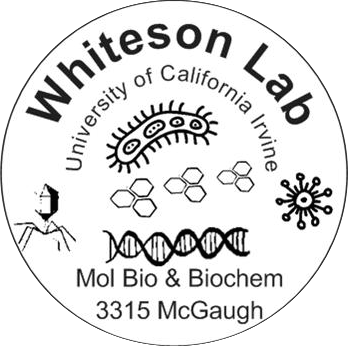By Hannah Keane, Dec. 2016
What is it? What does it do?
Botulinum toxin (BTX) is a neurotoxic protein with 8 distinct serotypes [4]. All BTX exotoxins function as a polypeptide that blocks the release of a neurotransmitter, acetylcholine, involved in motor skills. BTX cleaves SNARE proteins preventing fusion of synaptic vesicles with the synaptic terminal; without fusion, acetylcholine cannot be released and muscle contractions are inhibited.
When was it discovered?
In 1897 botulism was first linked to the bacterial toxin by Emile Pierre van Ermengem, a bacteriologist at the University of Ghent in Belgium [3].
What produces it?
BTX is produced by Clostridium botulinum, a gram-positive anaerobic bacterium that commonly forms rod-shaped dormant spores [4].
Where is it found?
C. botulinum is pervasive in soil and marine environments, commonly found on plants, and also in mammalian intestinal tracts [4]. Botulism is most frequently caused by intoxication from ingesting food contaminated with the botulinum toxin [1].
Why is it important?
The risk of foodborne botulism in home-canned foods can be fatal. The recommendation for children less than 1-year-old to avoid consumption of honey is due to the presence of C. botulinum, which is known to cause infant botulism [1].
BTX is one of the most highly toxic biological compounds that currently exist, with potential as a bioterrorism agent.
Clinical uses range from cosmetic to medical applications in the treatment of wrinkles and strabismus, respectively. Therapeutic effects have been shown to improve a number of conditions [3].
Fun facts: Botox® was first produced in Irvine, California [4]. Botulism was named from the Latin word “botulus” which translates to sausage i.e. the source of intoxication [2].

illustration
Fig 1. Overview Botulinum toxin (Botox ®). (n.d.). Retrieved November 30, 2016, from http://www.oculoplastics.co.uk/botul_overview.php
References
[1] Botulism. (2016, May 03). Retrieved November 30, 2016, from Centers for Disease Control and Prevention, http://www.cdc.gov/botulism/
[2] Erbguth, Frank J. “Historical notes on botulism, Clostridium botulinum, botulinum toxin, and the idea of the therapeutic use of the toxin.” Movement Disorders 19.S8 (2004): S2-S6.
[3] Münchau, A., & Bhatia, K. P. (2000). Uses of botulinum toxin injection in medicine today. BMJ : British Medical Journal, 320(7228), 161–165.
[4] Nigam, P. K., & Nigam, A. (2010). BOTULINUM TOXIN. Indian Journal of Dermatology, 55(1), 8–14. http://doi.org/10.4103/0019-5154.60343

